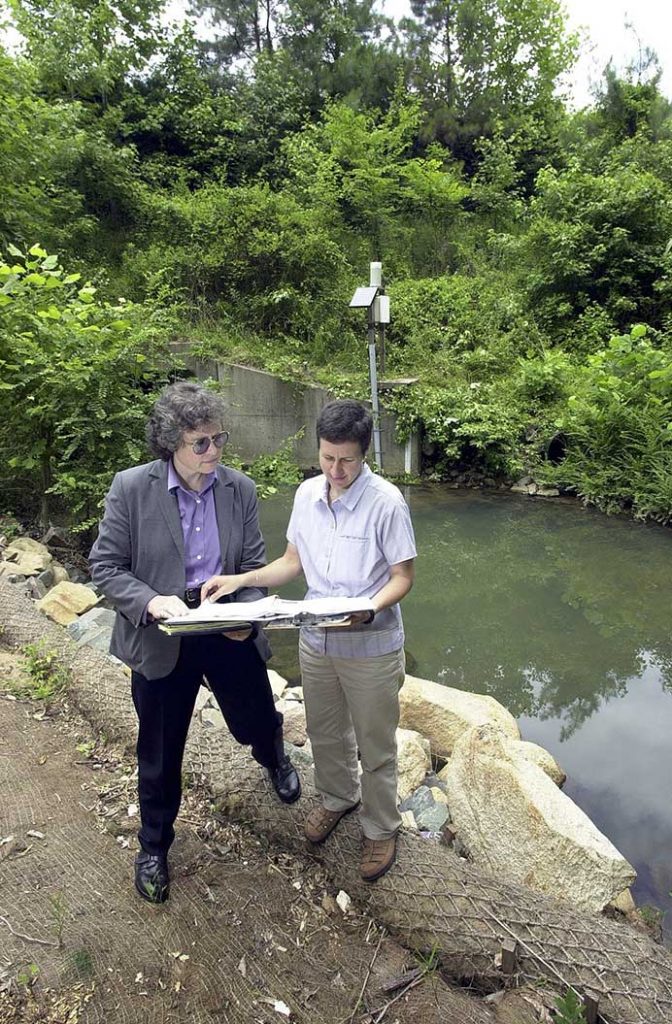Stormwater
The Main Campus and outlying parcels discharge stormwater to the main watersheds in Chapel Hill, including Morgan Creek, Bolin Creek, and Booker Creek, all of which flow into B. Everett Jordan Lake, a drinking water reservoir for the region.The University manages a comprehensive Stormwater Management Program driven by regulatory and sustainability factors. Like nearby towns, the campus holds a stormwater permit under the National Pollutant Discharge Elimination System (NPDES), which was first issued in 2007. In 2009, the Jordan Lake Nutrient Strategy became State law, prompting the University to adopt new stormwater requirements associated with development or redevelopment.
In 2014, UNC created a campus Stormwater Utility that helps to fund the maintenance of the extensive stormwater system that includes thousands of catch basins and manholes, over 50 miles of piping, and over 250 stormwater control measures (SCMs). The University’s installations of innovative SCMs for high density development, such as rainwater harvesting, green roofs, and permeable pavement, serve as examples for stormwater professionals in North Carolina. The University completed a Stormwater Master Plan in 2014 that identifies additional stormwater projects needed to improve water quality, reduce flooding, or repair aging infrastructure.

at the North Carolina Botanical Garden
